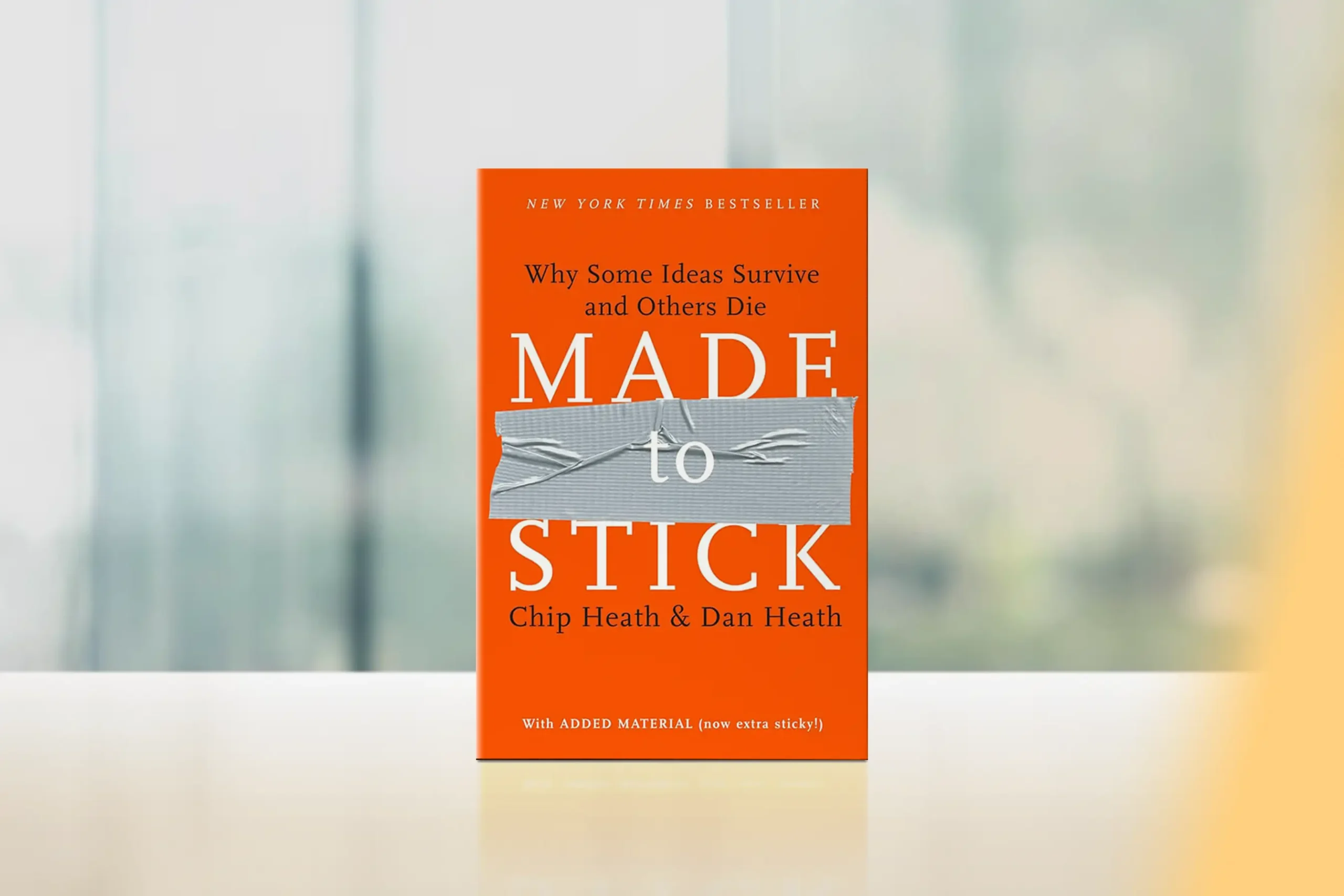Feeling exhausted at work has become all too common, as constant stress, relentless deadlines, and chronic overwork take a toll on both mind and body. These pressures don’t just affect your energy—they can slowly push you toward burnout, impacting your performance, health, and overall well-being.
Inside this article:

1. What is Burnout
Burnout is a state of emotional, physical, and mental exhaustion caused by chronic workplace stress that hasn’t been successfully managed. Unlike simple fatigue, burnout represents a profound depletion that doesn’t resolve with a good night’s sleep or a weekend off. It’s about a systematic erosion of your professional vitality that can have lasting consequences.
The Three Core Dimensions of Burnout:
- Emotional exhaustion: Feeling drained, depleted, and emotionally overwhelmed by work demands
- Depersonalization: Developing cynical attitudes toward work, colleagues, or clients, creating emotional distance
- Reduced personal accomplishment: Experiencing feelings of ineffectiveness and questioning your professional competence
What Burnout Isn’t:
- Normal work stress: Temporary pressure that motivates and energizes, typically resolving after task completion
- Laziness or lack of motivation: Burnout often affects highly motivated individuals who care deeply about their work
- A character flaw: It’s a systemic response to chronic workplace stressors, not a personal weakness
Common Myths About Burnout:
- “Everyone gets burned out sometimes”: While stress is universal, true burnout is a serious condition requiring intervention
- “It only affects weak people”: Research shows burnout often impacts high-performers most severely
Think of burnout as your internal alarm system signaling that the demands placed on you have exceeded your resources to cope effectively. It’s your mind and body’s way of saying that current patterns are unsustainable. When we push through exhaustion without addressing its root causes, we diminish our capacity for engagement, creativity, and joy at work.
For deeper strategies on building resilience against workplace challenges, explore our guide on Building Resilience: Bouncing Back from Life’s Challenges.
Key Takeaway: Burnout is a legitimate workplace phenomenon requiring serious attention, not a personal failing. Recognizing it as a systemic response to chronic stress is the first step toward addressing it effectively.

2. Why Burnout is Rising Today
Modern workplaces have created a perfect storm for burnout, with research from Gallup showing that 76% of employees experience workplace burnout at least sometimes. Understanding these trends helps you recognize that your exhaustion may be a rational response to unreasonable demands.
The Always-On Culture:
Digital connectivity has eliminated the boundaries that once protected personal time from work demands.
- Digital connectivity: Work emails follow you everywhere through smartphones and laptops
- Instant response expectations: Pressure to reply immediately creates constant mental engagement
- Meeting overload: Back-to-back video calls drain mental resources faster than in-person ones
Remote Work Challenges:
Working from home has created new stressors that many organizations haven’t addressed effectively.
- Blurred boundaries: Home becomes office, making it impossible to truly “leave work”
- Increased isolation: Less support from colleagues who might notice burnout warning signs
- Self-management pressure: More responsibility for productivity without traditional structure
Workplace Intensification:
Modern organizations demand more output with fewer resources, creating unsustainable pressure on individual employees.
- Lean staffing: Organizations expect more output with fewer people
- Role expansion: Job roles include multiple people’s responsibilities
Recent studies show that 44% of remote workers report working more hours in 2023 compared to the previous year, according to Buffer’s State of Remote Work survey. Research published in Nature Human Behavior finds that remote employees work approximately 10% longer than their office counterparts. These aren’t personal failings—they’re responses to systemic workplace changes.
To learn more about creating sustainable work patterns, read our article on Work-life balance: How to balance Ambition with Wellbeing.
Key Takeaway: Rising burnout reflects structural workplace changes, not individual weakness. Your exhaustion may be a rational response to unsustainable demands.

3. The Hidden Costs of Burnout
Burnout creates cascading consequences that extend far beyond feeling tired. These impacts affect productivity, health, and relationships in ways that compound over time.
Performance and Productivity Impacts:
Burnout doesn’t just make you feel bad—it systematically undermines your ability to do good work.
- Cognitive decline: Difficulty concentrating, making decisions, and retaining information
- Creativity loss: Mental exhaustion limits innovative thinking and problem-solving
- Error increases: Fatigue contributing to mistakes requiring rework and correction
- Absenteeism rise: More sick days due to physical and mental health deterioration
Health Consequences:
Your body and mind pay a steep price for chronic workplace stress that goes unaddressed.
- Mental health issues: Anxiety and depression requiring professional treatment
- Physical symptoms: Sleep disorders, weakened immunity, cardiovascular stress
- Emotional numbness: Decreased capacity for positive emotions affecting all life areas
- Chronic fatigue: Exhaustion that doesn’t improve with rest or time off
Relationship and Social Costs:
Burnout creates ripple effects that damage the connections and support systems you need most.
- Family strain: Reduced emotional availability and increased conflict at home
- Professional relationships: Decreased collaboration and increased workplace tension
- Social withdrawal: Avoiding friends and activities, leading to isolation
Organizational Impact:
Research from Gallup shows that burned-out employees are 2.6 times more likely to actively seek different jobs and 63% more likely to take sick days. Industrial safety studies indicate that 70% of workplace accidents are attributed to burnout, highlighting the severe operational risks of unaddressed employee burnout.
For comprehensive strategies on managing workplace stress, explore Effective Stress Management: Your Path to a Healthier, Balanced Life.
Key Takeaway: Burnout’s costs extend beyond temporary tiredness, creating lasting impacts on health, relationships, and career success. Early intervention prevents these cascading consequences.

4. Are You Experiencing Burnout?
Recognizing burnout requires honest self-assessment. Its symptoms develop gradually and can be mistaken for temporary stress. Use this evaluation to assess your current state.
Emotional and Mental Warning Signs:
These psychological symptoms often appear first, before physical manifestations become obvious.
- Chronic exhaustion: Feeling drained even after rest, with fatigue that doesn’t improve with sleep
- Work cynicism: Developing negative attitudes about your job that weren’t present before
- Emotional detachment: Feeling disconnected from work outcomes and reduced empathy for others
- Persistent anxiety: Increased worry about work performance and shorter temper with colleagues
- Daily dread: Feeling anxious or depressed about going to work or facing work tasks
Physical Symptoms to Monitor:
Your body often signals burnout before your mind fully recognizes what’s happening.
- Sleep disturbances: Difficulty falling asleep due to racing work thoughts or waking unrefreshed
- Frequent illness: Getting sick more often due to compromised immune system
- Physical tension: Headaches, muscle pain, and persistent body aches
- Appetite changes: Eating significantly more or less, often choosing convenience over nutrition
Behavioral Changes:
These shifts in how you approach work tasks can indicate your coping mechanisms are failing.
- Performance decline: Taking longer for familiar tasks, missing previously manageable deadlines
- Increased mistakes: Making errors you wouldn’t normally make
- Procrastination: Avoiding important tasks, focusing on less crucial activities instead
Self-Assessment Questions:
- Do you feel energized or consistently drained by work?
- Are you proud of accomplishments or do they feel meaningless?
- Can you disconnect during personal time or do work thoughts constantly intrude?
If multiple symptoms persist for more than two weeks, you may be experiencing burnout rather than temporary stress.
To develop better awareness of your emotional patterns, consider reading How Self-Reflection Fuels Personal Growth and Success.
Key Takeaway: Burnout symptoms develop gradually and can be subtle. Regular self-assessment helps identify concerning patterns before they become entrenched.

5. Common Burnout Triggers
Understanding how specific workplace triggers contribute to burnout helps you address root causes rather than just managing symptoms. McKinsey Health Institute research across 15 countries found that toxic workplace behavior was the biggest predictor of burnout symptoms and intent to leave. These three primary triggers often interact and amplify each other’s effects.
Chronic Stress Foundations:
When workplace pressure becomes your normal state rather than an occasional challenge, burnout becomes inevitable.
- Constant pressure: High-stress situations becoming your normal operating environment
- Lack of control: Feeling powerless to influence workload, methods, or outcomes
- Value conflicts: Working in ways that contradict your personal values or ethics
- Unclear expectations: Ambiguous requirements creating uncertainty about performance standards
Deadline Pressure Cycles:
Unrealistic timelines create a destructive pattern where quality work becomes impossible to deliver.
- Unrealistic timelines: Consistently asked to complete quality work in insufficient time
- Competing priorities: Juggling multiple “urgent” projects without clear prioritization guidance
- Last-minute changes: Frequent scope modifications invalidating previous work
Overwork Patterns:
When working harder becomes the default to every challenge, you’re setting yourself up for exhaustion.
- Excessive hours: Regularly working beyond standard hours without proportional compensation
- Insufficient recovery: No adequate breaks between intense work periods
- Boundary erosion: Work expanding into personal time, weekends, and vacations
The Destructive Cycle:
- High demands trigger stress response
- Compensation through overwork and longer hours
- Fatigue decreases efficiency, requiring more time
- Poor performance creates additional pressure
- Resources become depleted
- Burnout manifests as complete breakdown
Different industries have characteristic triggers—healthcare faces emotional demands, with K-12 workers experiencing the highest burnout rates at 44% reporting feeling burned out “always” or “very often,” while technology struggles with rapid change and connectivity pressures.
For strategies on managing workplace pressure, explore How a Positive Mindset Helps You Overcome Life’s Challenges.
Key Takeaway: Stress, deadlines, and overwork create a self-reinforcing cycle depleting resources faster than they can be replenished. Breaking this cycle requires addressing systemic causes.

6. Burnout vs. Stress
Distinguishing between normal workplace stress and burnout is crucial for choosing appropriate responses. While related, these conditions require different approaches and have distinct characteristics.
Stress: The Short-Term Response
Think of stress as a sprint—intense but time-limited, with clear recovery periods.
- Energy impact: Often increases energy and focus, creating urgency that drives action
- Emotional state: Anxiety and pressure accompanied by underlying optimism for improvement
- Recovery potential: Symptoms typically resolve with rest, task completion, or stressor removal
- Motivation effect: Can increase drive to overcome challenges and reach goals
Burnout: The Long-Term Depletion
Burnout is like running marathon pace indefinitely until your body breaks down.
- Energy impact: Persistent exhaustion that doesn’t improve with rest or time off
- Emotional state: Cynicism, detachment, and hopelessness with little improvement
- Recovery difficulty: Symptoms persist even during vacations, requiring systematic intervention
- Motivation erosion: Decreased engagement with activities that once felt meaningful
Key Differentiators:
- Response to relief: Stress improves when pressure is removed; burnout symptoms still persist during low-stress periods
- Attitude toward work: Stress maintains underlying engagement; burnout involves fundamental disengagement with work tasks and goals
- Recovery requirements: Stress resolves with rest; burnout requires comprehensive lifestyle changes
Warning Signs of Transition:
- Stress responses that don’t diminish after stressor removal
- Saying “I can’t keep doing this” rather than “This is challenging”
- Feeling disconnected from work outcomes you previously cared about
- Physical symptoms persisting during weekends and vacations
Understanding this distinction helps you choose appropriate interventions—stress management techniques may be sufficient for acute pressure, while burnout requires more systematic changes to prevent recurrence.
For more insights on developing resilience during difficult periods, read Thriving Through Life Transitions: Building Resilience and Confidence.
Key Takeaway: Stress energizes while burnout depletes; stress motivates action while burnout creates disengagement. Understanding which you’re experiencing determines appropriate intervention strategies.

7. Recovery and Prevention
Recovering from burnout requires addressing immediate symptoms while building long-term resilience. Prevention strategies focus on creating sustainable work patterns that protect against future episodes.
Immediate Recovery Actions:
Start with these essential steps to begin breaking the burnout cycle and stabilize your wellbeing.
- Prioritize sleep: Establish consistent sleep schedules and treat rest as non-negotiable
- Reduce workload temporarily: Delegate tasks, postpone non-essential projects, create boundaries
- Engage in restoration: Pursue activities that genuinely restore energy rather than just distract
- Seek support: Connect with trusted people who can provide emotional support and perspective
Boundary Setting Essentials:
Creating clear limits between work and personal life is crucial for both recovery and prevention.
- Time boundaries: Clear start and end times for work, including email and call restrictions
- Physical boundaries: Separate workspace from living space when working from home
- Emotional boundaries: Practice saying no to additional responsibilities
Professional Development for Resilience:
Investing in your skills and career direction provides both competence and motivation to sustain healthy work patterns.
- Skill building: Develop capabilities that increase efficiency and confidence
- Career planning: Create clear goals that provide motivation beyond immediate demands
- Network building: Cultivate relationships that provide support and opportunities
Lifestyle Integration:
Your life outside work either supports your professional resilience or undermines it—choose activities that truly restore you.
- Physical health: Regular exercise, nutrition, and healthcare build stress resilience
- Mental health practices: Meditation, therapy, or journaling develop emotional regulation
- Relationship investment: Maintain meaningful connections outside work
- Purpose clarification: Regularly revisit values to ensure work aligns with broader meaning
For more comprehensive strategies on personal development and growth, explore Mastering Personal Growth: Setting and Achieving Your Goals.
Key Takeaway: Recovery requires both immediate relief and long-term pattern changes. Sustainable prevention focuses on building resilience through boundaries, support systems, and work practices that honor human needs.

8. When to Seek Help
Recognizing when burnout requires professional help is crucial for effective recovery and preventing serious mental health problems. The American Psychological Association’s 2024 Work in America Survey found that 67% of workers experienced at least one outcome associated with burnout in the previous month. Many people delay seeking help due to stigma or hope they can manage independently.
Signs That Professional Help Is Needed:
Professional support becomes essential when your efforts at self-management aren’t creating meaningful improvement.
- Persistent symptoms: Exhaustion lasts more than two weeks and doesn’t improve with rest
- Physical health impacts: Sleep disorders, frequent illness, or chronic pain indicating stress
- Mental health concerns: Symptoms of depression, anxiety, interfere with daily functions
- Relationship deterioration: Work stress affects family relationships or friendships
- Substance use increases: Relying on alcohol, caffeine, or medications to cope with stress
Overcoming Common Barriers:
Early intervention is often more effective and requires less time than addressing severe burnout later.
- Confidentiality protections: Mental health treatment maintain strict privacy
- Flexible scheduling: Health professionals accommodate evening or weekend appointments
- Financial resources: Insurance coverage and employer-provided support can reduce costs
Remember that seeking help demonstrates strength and self-awareness, not professional inadequacy. Many successful professionals work with therapists, coaches, or other support providers to address workplace stress and enhance their careers.
Key Takeaway: Professional support becomes necessary when self-management isn’t sufficient or symptoms persist despite intervention efforts. Early help-seeking prevents serious complications and often leads to more effective recovery.
Next Steps
Recognizing burnout is the first step toward recovery. The exhaustion and cynicism you’re feeling aren’t character flaws—they’re signals that your work patterns need to change.
Key Takeaways:
- Work burnout is a legitimate requiring systemic solutions, not just individual coping
- Modern workplace changes have significantly increased burnout rates across industries
- Recovery requires both immediate relief and long-term prevention strategies
Immediate Actions:
- Conduct honest self-assessment using the warning signs outlined
- Set one firm boundary this week (work hours, email restrictions)
- Prioritize sleep for seven days—treat it as non-negotiable
- Reach out to trusted support (friend, manager, or mental health professional)
- Explore your organization’s employee assistance programs
You deserve a career that energizes rather than depletes you. Taking action now prevents more serious consequences later.
Related articles
Effective Stress Management: Your Path to a Healthier, Balanced Life
How to manage workplace stress and create coping strategies for long-term wellbeing.
Work-life balance: How to balance Ambition with Wellbeing
Learn how to pursue career success while maintaining your wellbeing in today’s demanding world.
Thriving Through Life Transitions: Building Resilience and Confidence
Navigate major life changes and emerge stronger through proven strategies for managing uncertainty.
How to Prioritize Emotional Wellbeing: A Beginner’s Guide
Build foundational wellbeing practices that support both personal happiness and professional success.
Further reading
“The Gifts of Imperfection” by Brené Brown
Explores wholehearted living and the courage to be vulnerable, directly supporting the article’s themes of self-acceptance and authentic wellbeing.
“The Body Keeps the Score” by Bessel van der Kolk
Examines how trauma and chronic stress affect the body, aligning with the article’s discussion of burnout’s physical health impacts.
“Self-Compassion” by Kristin Neff
Teaches readers how to treat themselves with kindness during difficult times, supporting the article’s approach to recovery without self-judgment.
“Essentialism: The Disciplined Pursuit of Less” by Greg McKeown
Provides strategies for focusing on what truly matters, connecting to the article’s themes of boundary setting and priority management.





